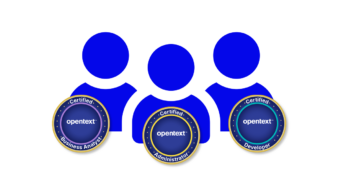In this series of three blogs on managing user resistance when implementing software, we are considering the following key areas that help to not only manage resistance but to also convert resistance into support:
- Consider resistance as a natural reaction to change
- Distinguish between hesitancy and resistance
- Detect signs of resistance
- Identify the root causes of resistance
- Manage resistance
- Communicate, communicate, communicate
- Convert resistance into support
In the first blog in this series we looked at the first 3 topics above. In this blog we will be looking at identifying root causes and managing resistance. Managing resistance is ineffective when it simply focuses on the symptoms. You need to find out the root causes of the resistance in order to manage it effectively.
Identify the root causes of resistance
Many causes of resistance is centered around fear. People fear the unknown, and they assume it may affect their jobs in a negative way because of being unable to master it. These root causes for resistance can include, lack of:
- Awareness
This may be due to poor communication or inconsistent messages which can result in a misunderstanding of the why, how and what regarding change. - Support and commitment from management
Executives, senior leaders and people managers play an essential role as sponsors of change. They give the change credibility, authorize funding and resources, and perform important employee-facing activities. People in the organization look to these individuals to demonstrate why the change is necessary. A lack of support and commitment from management will result in a lack of support and commitment from the team. - Personal motivation and commitment
When users are happy within their own comfort zone and have found their workarounds to somehow achieve their work, they don’t see the need or urgency to change the status quo. Lack of personal motivation and commitment may also come from a lack of:- inclusion
- know-how
- self-confidence
- Impact on current job role
People might be afraid that they might lose their job due to the automation of tasks for more efficiency, better turnaround times or smarter work. - The organization’s past performance with change
If an organization does not manage change in a well-structured way, employees will be afraid of the next one. Alternatively, if too many changes happen at the same time it coult end up in change fatigue.
These major root causes will manifest as symptoms and signs of resistance as discussed in the last blog. Never just see the symptoms; look for the root causes. Only then you will be able to effectively manage resistance.
Manage resistance
The best way to “manage” resistance to change is to anticipate and plan for it. Get comfortable with it being a natural, human response to change and be sensitive to the impact change can have on your people. It is important to:
- Listen and understand objections
Examine individuals’ predispositions to change and allow them to bring up any concerns in a safe environment. Concerns are often legitimate, so be prepared to adapt your change plan. Make people feel heard and empathize with them, diffuse discomfort around the change by talking it through, asking questions, or connecting with their peers. - Show the benefits
How do the benefits of the change outweigh the costs to answer the all-important question: “What’s in it for me?” - Assemble the early adopters
Move your organization out of complacency by convincing a critical mass of individuals that the change is worth the inevitable ensuing personal costs. - Effectively engage the future users
Make a personal appeal. Convert the strongest dissenters. The journey will then be “from the affected to the involved”. - Provide training and support
Letting people find their own solutions is seldom possible when a goal of the software implementation is standardization or compliance. Thus, guidance through training is necessary. Nevertheless, show flexibility as trainer wherever possible. Let users go their preferred way B leading to the same result, even if you personally are a fan of way A. - Provide incentives
Incentives are one of the main influences between people and change. Why? Because positive change can only be sustained where improved performance is not only enabled but also rewarded. Incentives are most usually considered at the individual level and can be either financial or non-financial. - Demonstrate consequences
If all the above does not work for non-rational reasons, it might be necessary to talk about “change or die” (the consequence of not changing). Everything we do, or not do has consequences whether we like it or not. Sitting down and thinking through these consequences helps to avoid people sticking their head in the sand.
The third and final blog in this series will consider the last two topics of communication and how to convert resistance into support.
Do you need to adopt information management technology and help people transition through change?
OpenText™ Learning Services can help advise how to get the most from a change management program. Explore the OpenText Adoption Strategy Development FasTrak, or contact us.
Samuel Peuker is a Senior Manager within Learning Services, certified as a Prosci® Change Practitioner and a Business Analyst in several OpenText Products such as Content Server and Extended ECM. He is passionate in helping to drive OpenText solution adoption where the user-side of change is the most important aspect. Visit him on LinkedIn



